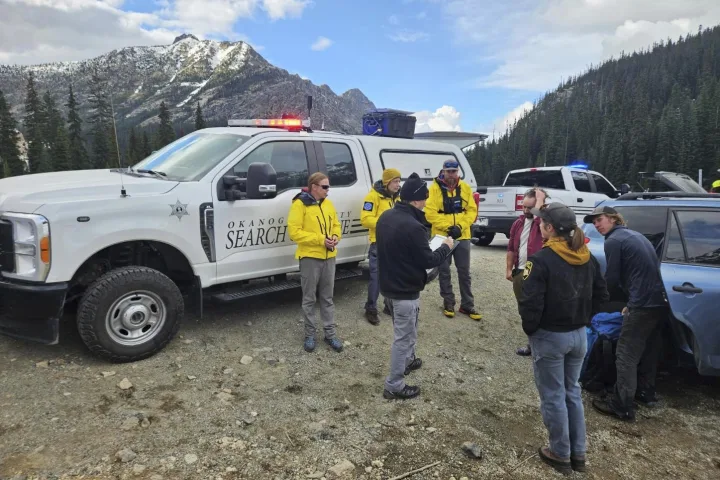
Three climbers fell 400 feet to their death. One climber survived and drove to a pay phone

A rock climber who fell an estimated 400 feet while descending a steep gully in Washington's North Cascades mountains survived the fall that killed his three companions, hiked to his car in the dark and then drove to a pay phone to call for help, authorities said Tuesday.
The surviving climber, who has not been publicly identified, extricated himself from a tangle of ropes, helmets and other equipment after the accident and made the trek despite suffering internal bleeding and head trauma, Okanogan County Undersheriff Dave Yarnell said.
Falls like this leading to three deaths are extremely rare, and many details about what led up to it still aren’t known, said Cristina Woodworth, who leads the sheriff’s search and rescue team. Seven years ago, two climbers were killed in a fall on El Capitan at Yosemite National Park.
The group of four — including the victims, aged 36, 47 and 63 — were scaling the Early Winters Spires, jagged peaks split by a cleft that's popular with climbers in the North Cascade Range, about 160 miles northeast of Seattle. The surviving climber was hospitalized in Seattle.
The group of four met with disaster that night when the anchor securing their ropes appears to have failed as they were descending in a steep gully, trying to reach the spire's base, Yarnell said.
They plummeted for about 200 feet into a slanted gulch and then tumbled another 200 feet before coming to rest, he said. Authorities believe the group had been ascending but turned around when they saw a storm approaching.
A three-person search and rescue team reached the site of the fall Sunday, Woodworth said. The team used coordinates from a device the climbers had been carrying, which had been shared by a friend of the men.
Once they found the site, they called in a helicopter to remove the bodies one at a time because of the rough terrain, Woodworth said.
On Monday, responders poured over the recovered equipment trying to decipher what caused the fall, Woodworth said. They found a piton — basically a small metal spike that is driven into rock cracks or ice and used as anchors by climbers — that was still clipped into the climbers' ropes.
Pitons are oftentimes left in walls. They can be there for years or even decades, and they may become less secure over time.
“It looked old and weathered, and the rest of their equipment looked newer, so we are making the assumption that it was an old piton,” Woodworth said.
Rock climbers secure themselves by ropes to anchors, such as pitons or other climbing equipment. The ropes are intended to arrest their fall if they should slip, and typically climbers use backup anchors, said Joshua Cole, a guide and co-owner of North Cascades Mountain Guides, who has been climbing in the area for about 20 years.
Generally, it would be unusual to rappel off a single piton, said Cole, adding that it is still unknown exactly what happened on the wall that night.
“We eventually, if possible, would like to get more information from surviving party,” Woodworth said.
The spires are a popular climbing spot. The route the climbers were taking, said Cole, was of moderate difficulty, and requires moving between ice, snow and rock.
But the conditions, the amount of ice versus rock for example, can change rapidly with the weather, he said, even week to week or day to day, changing the route's risks.